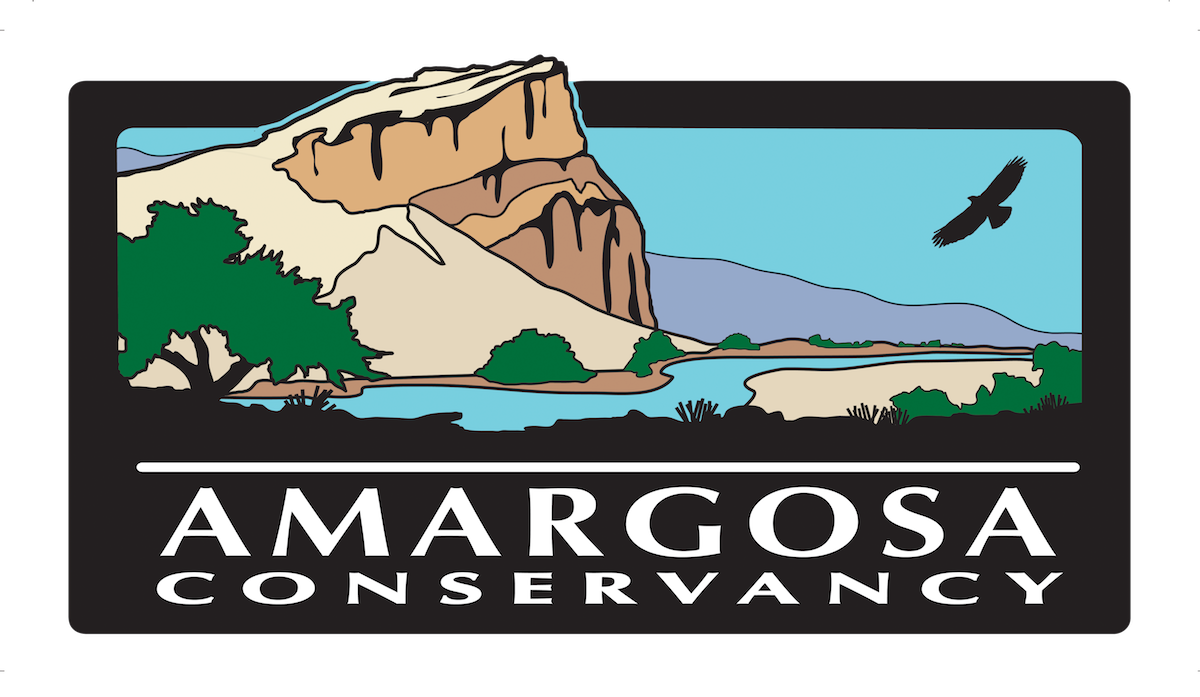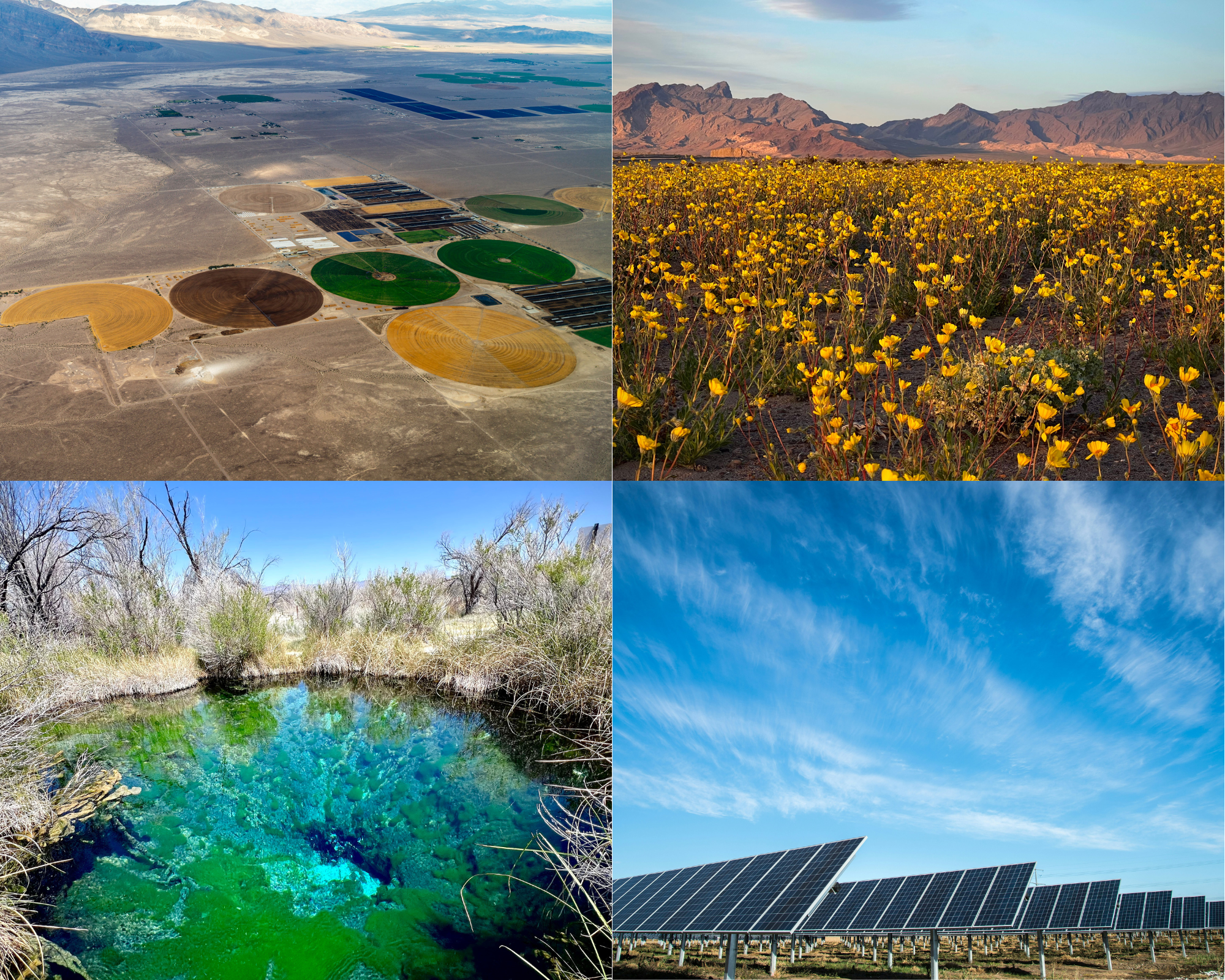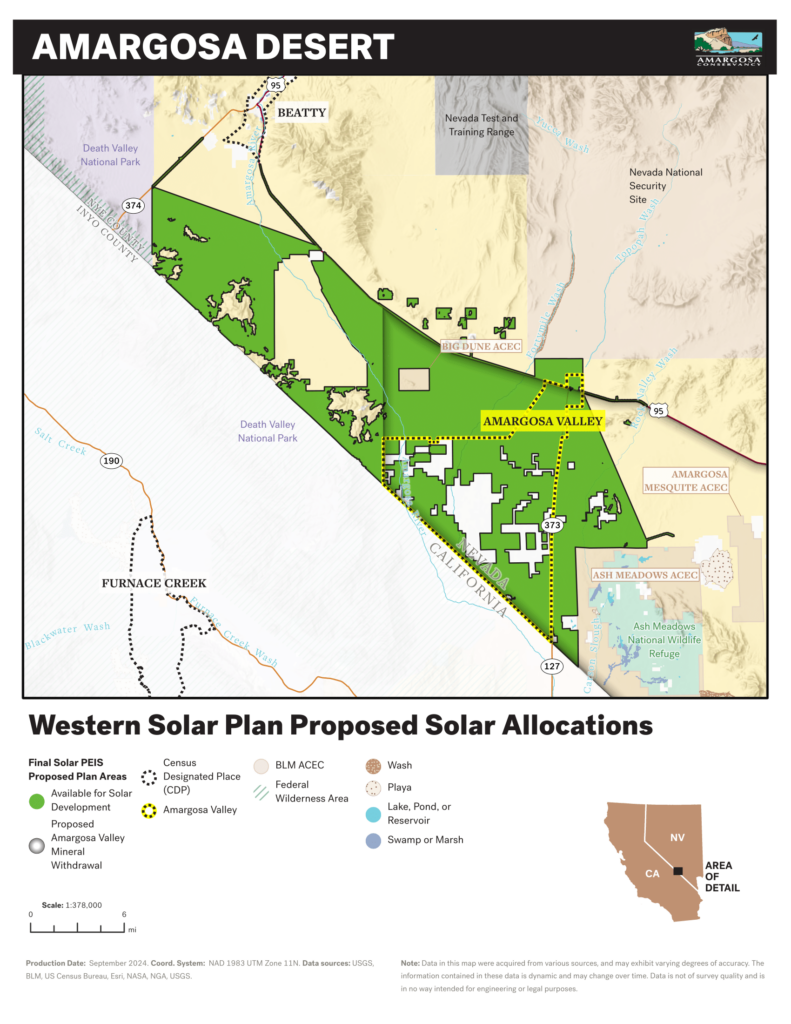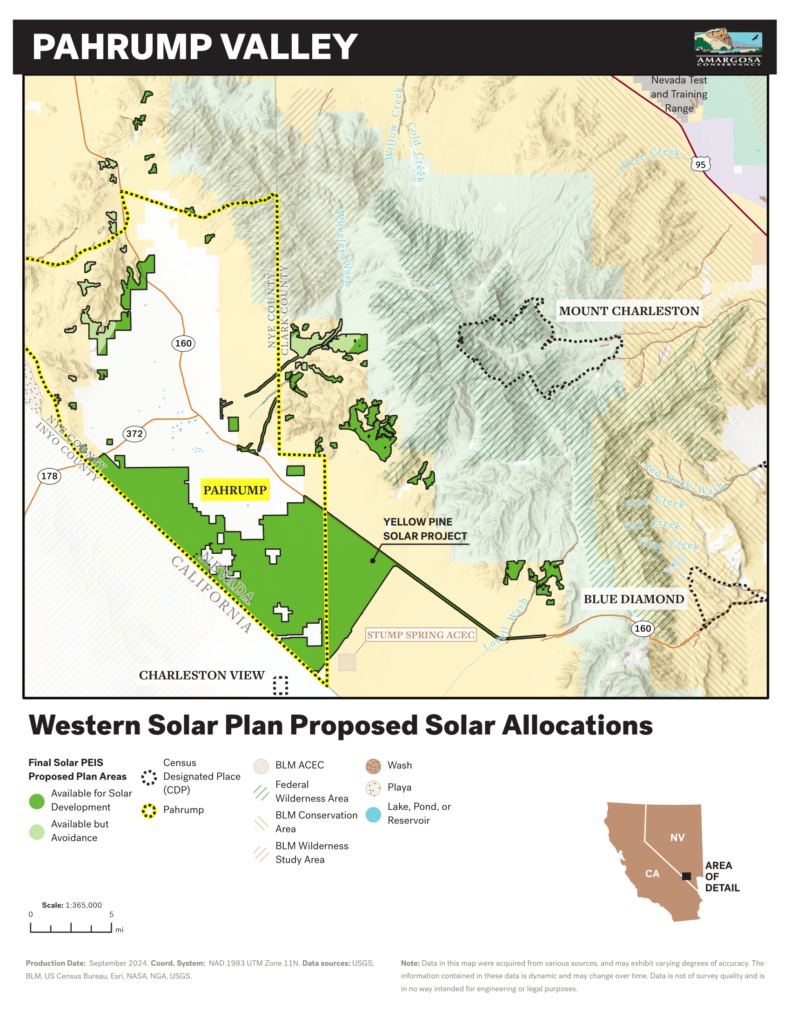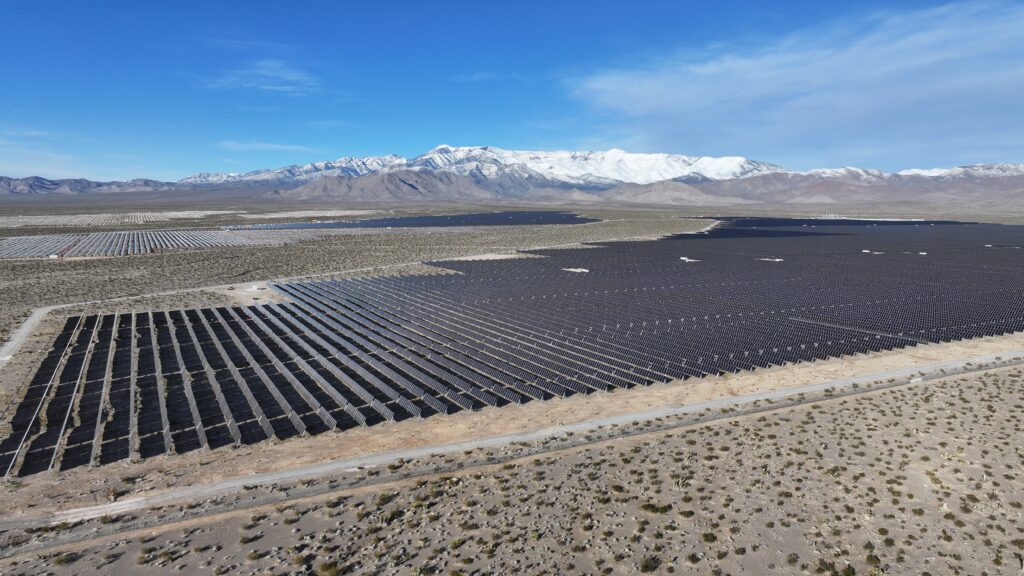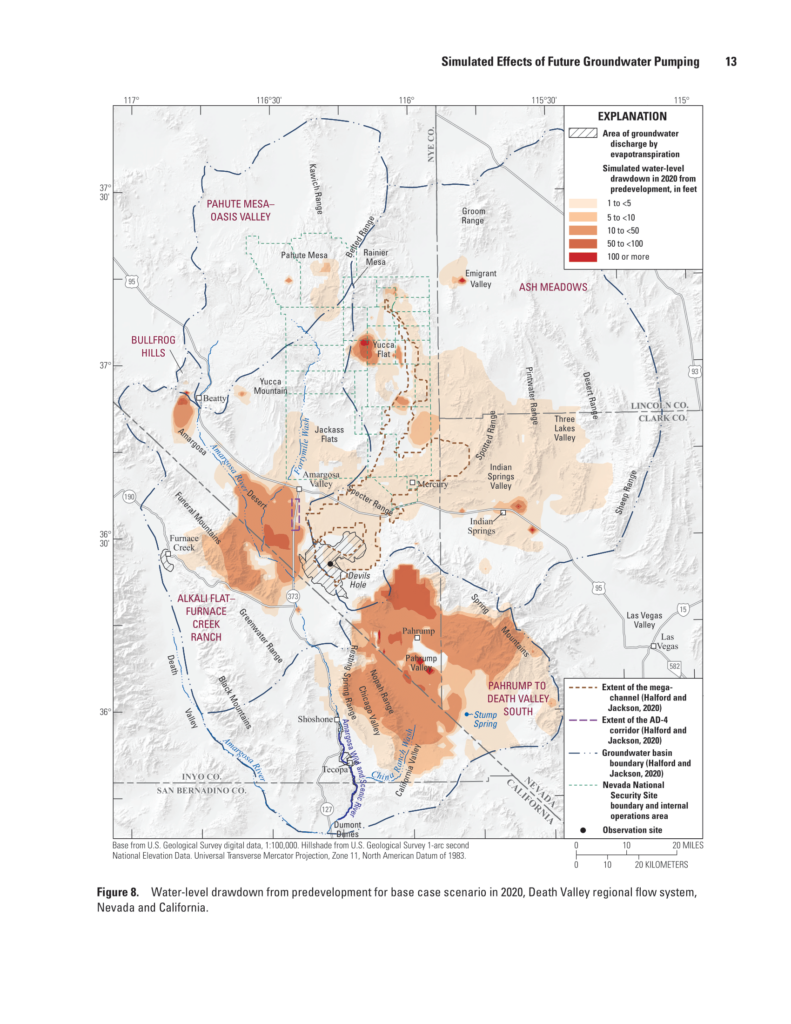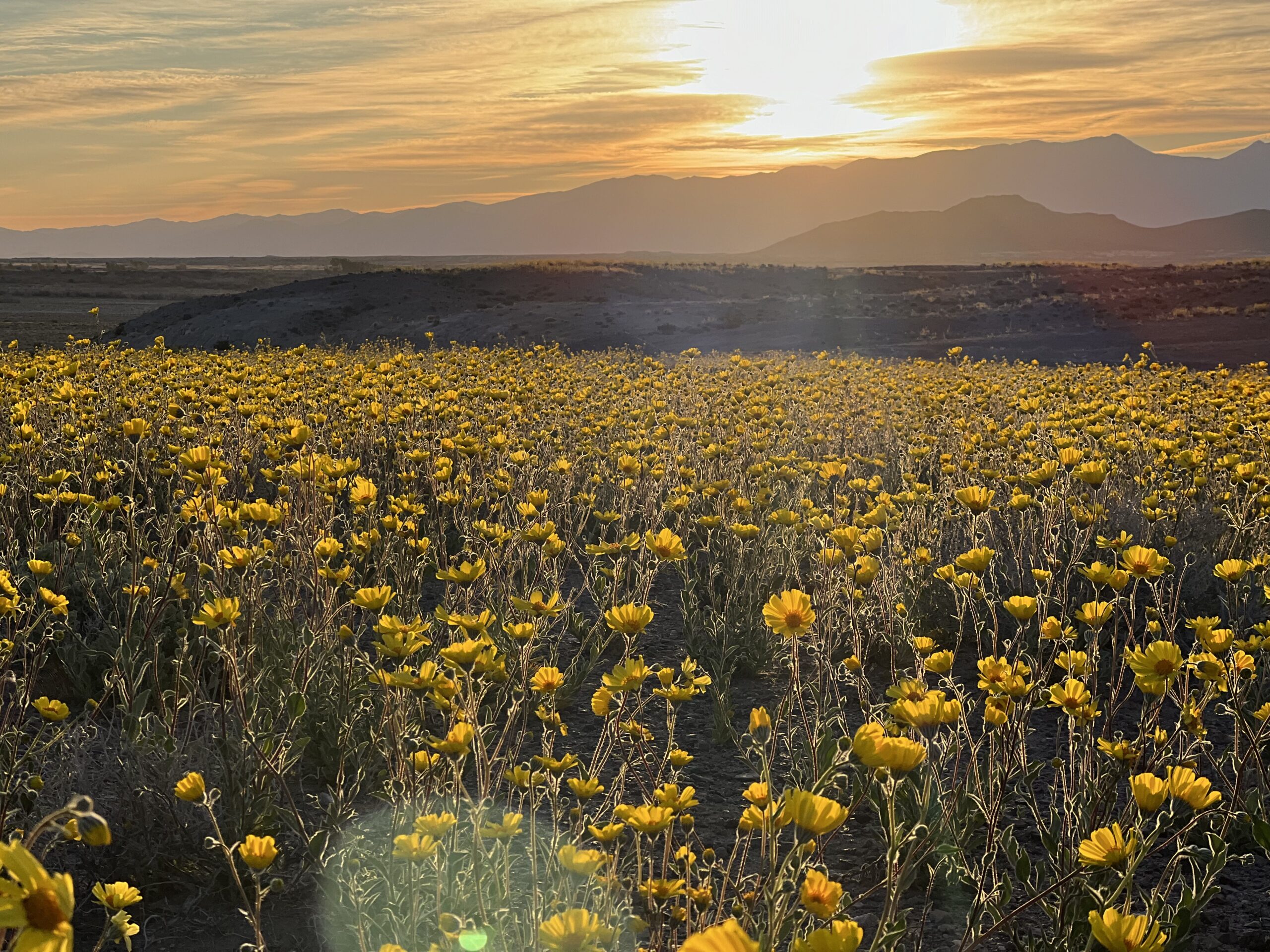ACTION ALERT
VIRTUAL TOWN HALL on SOLAR in the AMARGOSA RIVER WATERSHED
6PM WEDNESDAY, SEPT. 18TH
Join Amargosa Conservancy staff and board members for a virtual town hall to learn about the Bureau of Land Management’s new plan for solar siting and development in the West, what’s at stake for the Amargosa River, and how YOU can help us fight for the wildlife and communities most impacted.
CLICK HERE TO REGISTER
TAKE ACTION TODAY: Sign the petition calling on the BLM to pursue a more balanced approach to solar energy siting in the Amargosa River watershed
SIGN THE PETITION ON CHANGE.ORG
The Western Solar Plan is proposing to cover the Amargosa River watershed in 220,000 acres of solar. While solar energy is essential to our energy transition, we are gravely concerned that this could permanently change the character of the Amargosa, harming communities and biodiversity.
Climate change is battering the Mojave Desert with megadroughts, scorching heat domes, and raging flood events. The need for our nation to transition quickly away from an economy powered by fossil fuels has reached a point of undeniability; transitioning to cleaner sources like solar power is imperative.
In recognition of rampant climate chaos, the Biden Administration has recently released the results of an accelerated planning effort executed through the Bureau of Land Management to identify public lands in 11 western states to be prioritized or at minimum left open to potential solar energy production. The Western Solar Plan is an important step toward rapidly decarbonizing our society over the coming decades in hopes of avoiding even more severe climate change outcomes.
AC BLOG: WHAT IS A SOLAR PEIS?
NEVADA CURRENT: FEDS PLAN TO OPEN 32M ACRES OF PUBLIC LAND FOR SOLAR DEVELOPMENT ACROSS 11 WESTERN STATES
LAS VEGAS REVIEW JOURNAL: SILVER STATE MAY BECOME SOLAR STATE UNDER NEW FEDERAL PLAN
However, while the plan as released makes meaningful strides toward meeting the nation’s clean energy generation goals, nearly 220,000 acres of the Amargosa River watershed in Nye and Clark Counties in Nevada have been left open to potential industrial-scale solar energy development.
As this planning process reaches finalization, our organization believes it is crucial that decision makers do not lose sight of the magnitude of potential transformation of our public lands that will be required to accommodate a scale of solar energy production needed to meet increasing energy demands, and the associated impacts that will occur to biodiversity and communities in landscapes like the Amargosa River watershed. This planning process could determine the pattern of energy development on desert public lands in this extraordinary landscape for decades to come. They’ve got to get it right.
The push to develop solar energy on public lands in areas of the sensitive Amargosa River watershed in Nye and Clark Counties in Nevada and Inyo County in California raises significant concerns that cannot be ignored.
Over 25 solar projects have already been proposed in this single watershed, creating the potential for tens of thousands of acres or more of potential development. The draft plan as released would leave open an additional 160,000 acres of public land for potential solar development, leaving the Amargosa River highly vulnerable to extensive impacts resulting from groundwater depletion and alteration of surface flows that are critical factors of this desert river ecosystem.
While the benefits of solar power are clear, the costs—environmental, social, and economic—of developing these projects on public lands in this unique region are too great. With tens of millions of acres proposed for solar on public lands across the Western United States, it is a virtual certainty that proper planning can identify more suitable places for this sort of development than the crown jewel of the Mojave Desert, the Amargosa River.
CLICK HERE TO READ OUR SUBMITTED COMMENTS
CLICK HERE TO READ OUR PRESS RELEASE
Amargosa River watershed is an extraordinarily biodiverse and scenic desert river ecosystem spanning western Nevada and eastern California about an hour west of Las Vegas. The watershed, containing iconic protected landscapes such as Death Valley National Park, Ash Meadows National Wildlife Refuge, and the Amargosa Wild & Scenic River, supports the highest local concentration of unique and rare species anywhere in the United States.
Ash Meadows is located in the heart of the watershed, containing delicate ecosystems home to endangered species such as the famous Devils Hole pupfish, the most endangered fish species known on Earth. All up and down the River, from Beatty to Badwater as we say, the valley’s wetlands and riparian areas, sustained by an ancient groundwater system, are vital to these species’ survival.
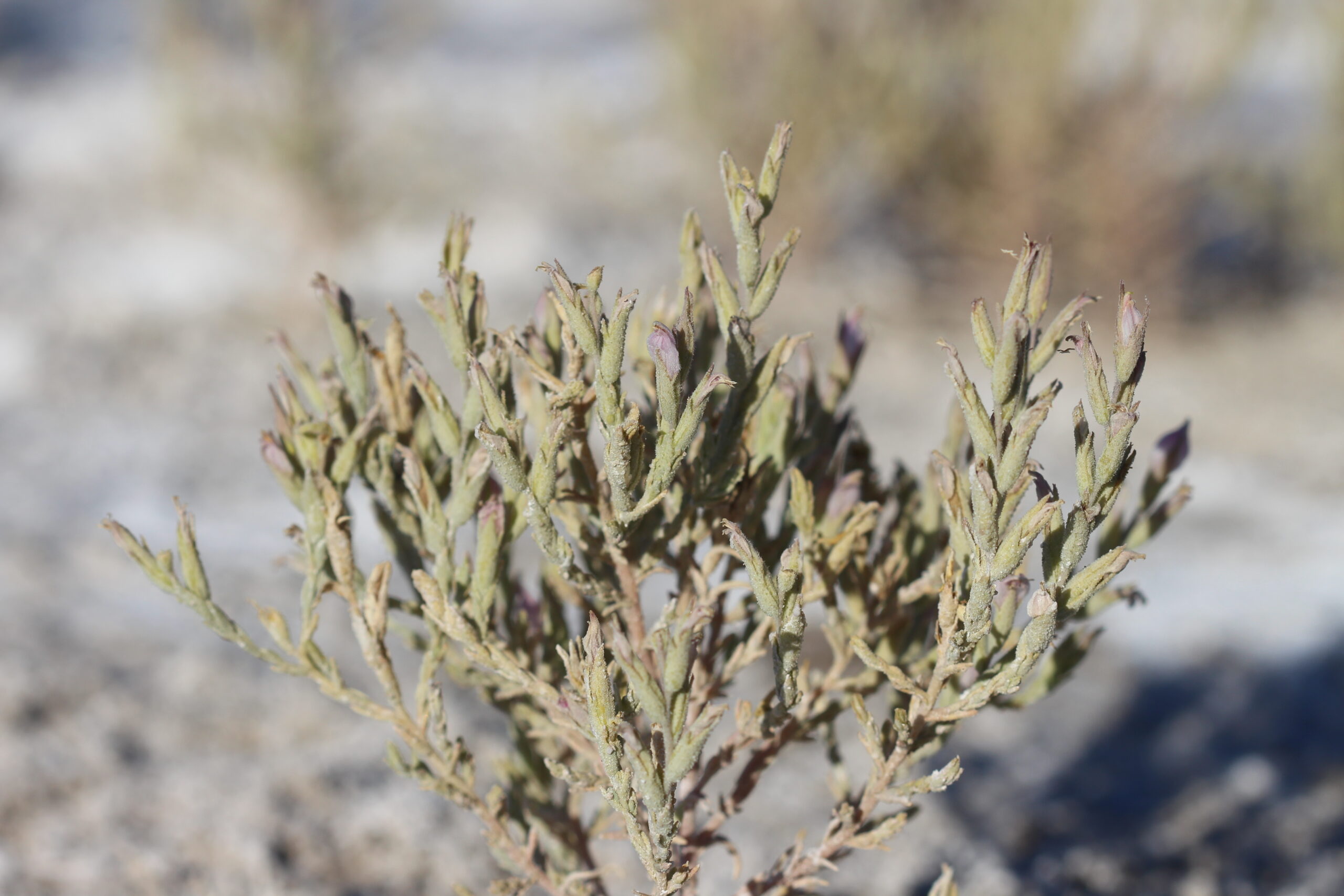
Tecopa Bird’s Beak (Chloropyron tecopensis), found only in the Amargosa River Watershed
The Amargosa River watershed also holds deep cultural significance for several regional tribes, particularly the Timbisha Shoshone and the Southern Paiute. For millennia, these lands and waters have been a source of spiritual and physical sustenance.
The large-scale industrialization required for solar farms threatens to disrupt the ecosystems, cultural resources and water supply for desert communities irreversibly. Construction activities, habitat fragmentation, and the depletion of groundwater resources could spell extinction for the flora and fauna that have thrived in this extreme desert environment for millennia.
A single solar project can require 1,000 acre-feet or more of water for construction – that’s enough water to sustain 2,000 households for a year. With groundwater overpumping being the chief threat to the Amargosa River, the basin simply cannot sustain a rush of solar projects.
In fact, water depletion in the Amargosa Valley has a high likelihood of jeopardizing downstream communities such as the Timbisha Shoshone Tribe’s village in Furnace Creek, CA, threatening a continuance of historical erasure of these peoples from their homelands. Over the past year, our organization has partnered closely with this community to advocate for enhanced protections of the watershed from the harms of proposed exploratory drilling and mining operations. Though mining operations proposed near protected and culturally important landscapes like Ash Meadows pose a more acute and direct threat to groundwater resources, the cumulative impact of large scale solar energy development to sovereign Tribal water rights could be catastrophic. In addition, solar development in the Amargosa region could lead to the loss of access to sacred sites, disruption of traditional practices, and desecration of ancestral lands that could result from sprawling industrial solar facilities are too high a price to pay for energy development that provides no cultural or even economic benefits to these Indigenous communities.
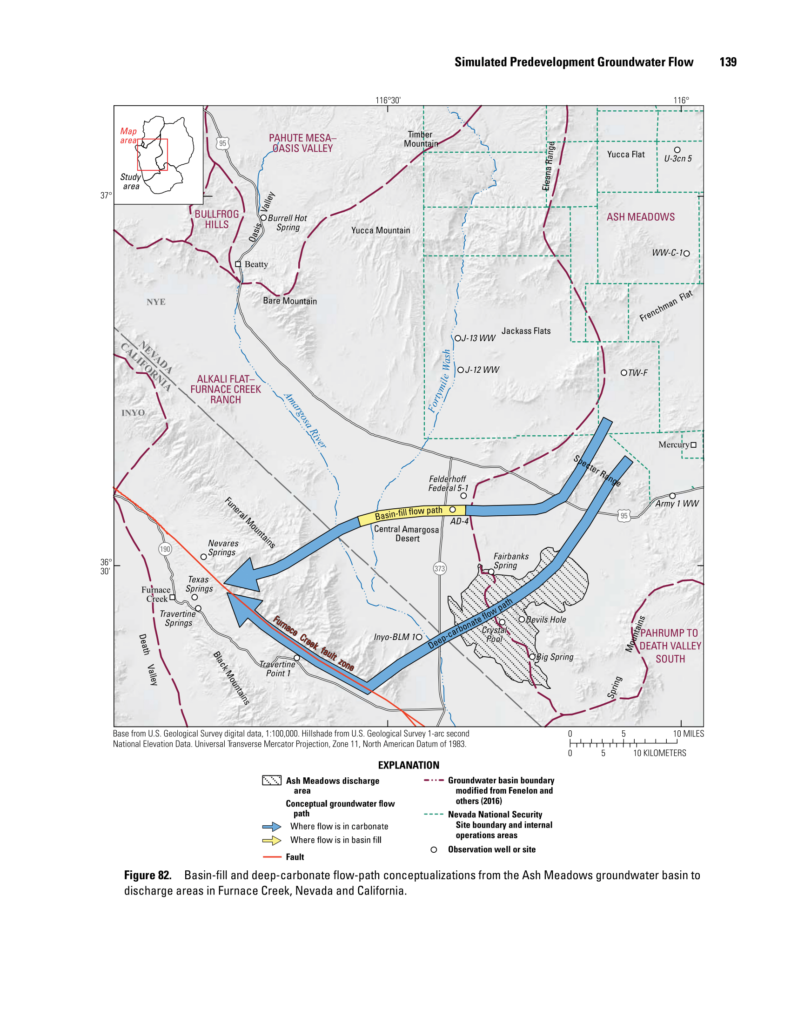 The Amargosa River watershed is also home to over 40,000 people spread across the rural communities of Beatty, Amargosa Valley, Crystal, and Pahrump in Nevada, and Furnace Creek, Shoshone, Tecopa, and Charleston View in California. These communities have poverty rates 15-30% above the national average, and median household incomes 30-55% less than the national average. Living near the Nevada Test Site, where atomic weapons were tested, and the proposed Yucca Mountain nuclear waste repository, they are the definition of environmental justice communities. These communities and their residents rely existentially on the groundwater of the Amargosa River for their lives and livelihoods, and so their future is inextricably tied to effective water conservation in the present. The Western Solar Plan must account for the cumulative impact to groundwater resources, particularly in landscapes like the Amargosa already experiencing stress from historic overpumping.
The Amargosa River watershed is also home to over 40,000 people spread across the rural communities of Beatty, Amargosa Valley, Crystal, and Pahrump in Nevada, and Furnace Creek, Shoshone, Tecopa, and Charleston View in California. These communities have poverty rates 15-30% above the national average, and median household incomes 30-55% less than the national average. Living near the Nevada Test Site, where atomic weapons were tested, and the proposed Yucca Mountain nuclear waste repository, they are the definition of environmental justice communities. These communities and their residents rely existentially on the groundwater of the Amargosa River for their lives and livelihoods, and so their future is inextricably tied to effective water conservation in the present. The Western Solar Plan must account for the cumulative impact to groundwater resources, particularly in landscapes like the Amargosa already experiencing stress from historic overpumping.
Our organization sees an alternative vision for a balanced renewable energy transition in the Amargosa River watershed on the horizon. While the vast majority of the region is comprised of public lands, there are significant parcels of private lands in the Amargosa Valley currently being utilized for agriculture that could be transformed into solar energy production projects. In addition to providing a direct benefit to local residents of these communities who otherwise have few opportunities for economic development, a change of use for these private lands stands to also provide a direct conservation benefit to wildlife and to protected landscapes like Ash Meadows National Wildlife Refuge by reducing pumping stresses on the regional aquifer. Such an approach to renewable energy presents an extraordinary win-win-win opportunity: a win for clean energy production, a win for rural and statistically disadvantaged communities, and a win for groundwater and wildlife conservation. Weighed against prioritizing sprawling development on biologically and culturally sensitive public lands, a private lands-centered approach is superior across virtually every metric.
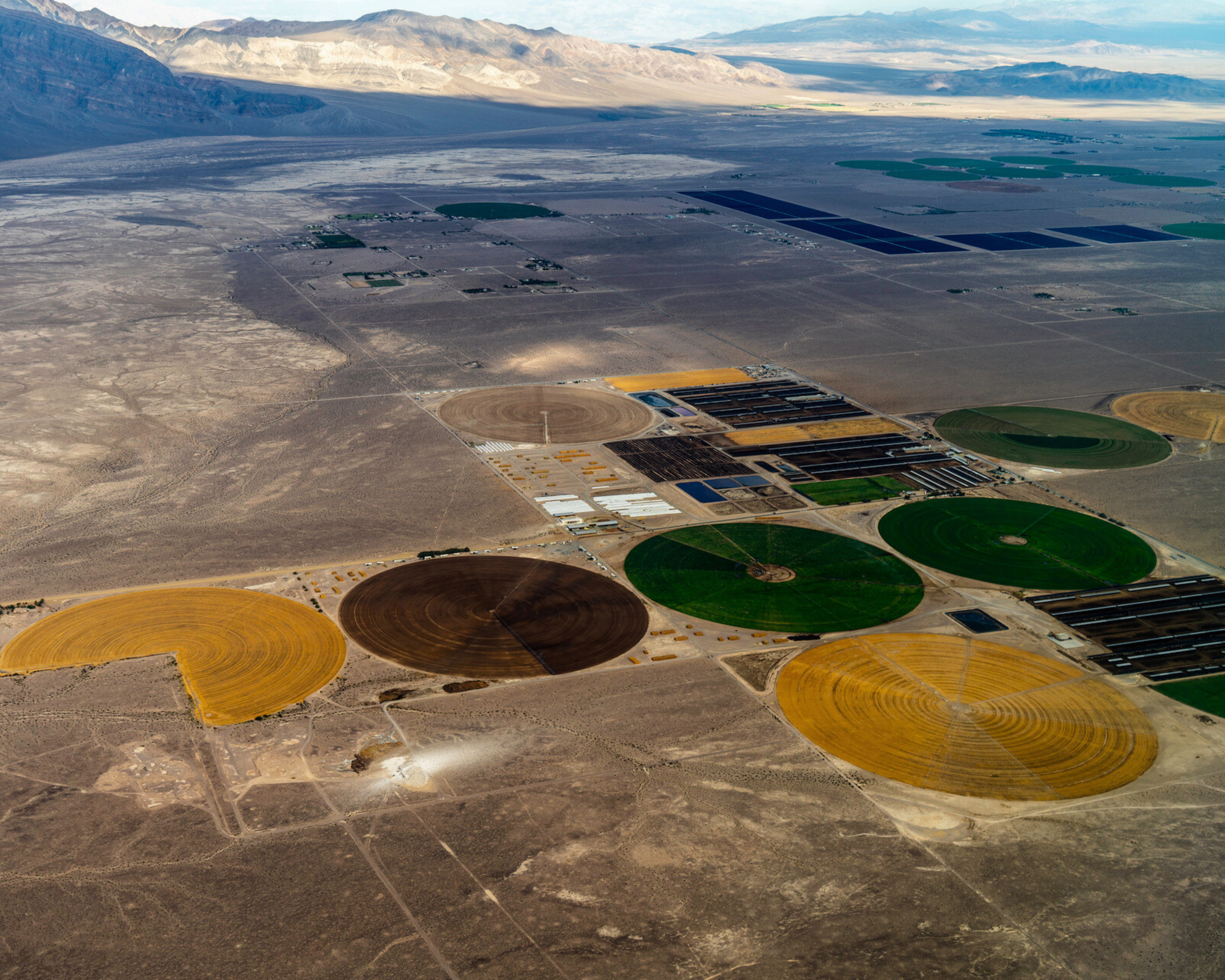
Farms in the Nevada community of Amargosa Valley
There are areas in the West that are less sensitive than the Amargosa River watershed, areas without endangered species or groundwater dependent ecosystems or vulnerable frontline communities. While no energy project is without impacts, prudent planning can minimize these impacts by siting them in the least harmful places. This watershed is not one of those places.
The Amargosa River watershed is a rare and irreplaceable part of our planet’s natural and cultural heritage. As we move towards a more sustainable future, we must not lose sight of the need to protect the places that represent our best chances to preserve extraordinary biodiversity. Solar energy is vital to our future, but it must be pursued in ways that respect and preserve the landscapes that make places like the Amargosa River watershed truly special.
We owe it to future generations to find a balance between renewable energy development and conservation. We urgently need your help to communicate these concerns to the Bureau of Land Management in this precious window of time before the plan is finalized. This is our last chance to ensure that the future of this incredible desert river remains vibrant.
Sign onto our petition today on change.org supporting a balanced transition to renewable energy that leaves intact the Amargosa River watershed for the benefit of irreplaceable biodiversity, and for the enjoyment of current and future generations.
SIGN THE PETITION ON CHANGE.ORG
And please, consider a donation to Amargosa Conservancy today. Your support during these critical times is crucial to our ability to raise our voice for the voiceless in this fight. Whether great or small, every donation makes a difference.
